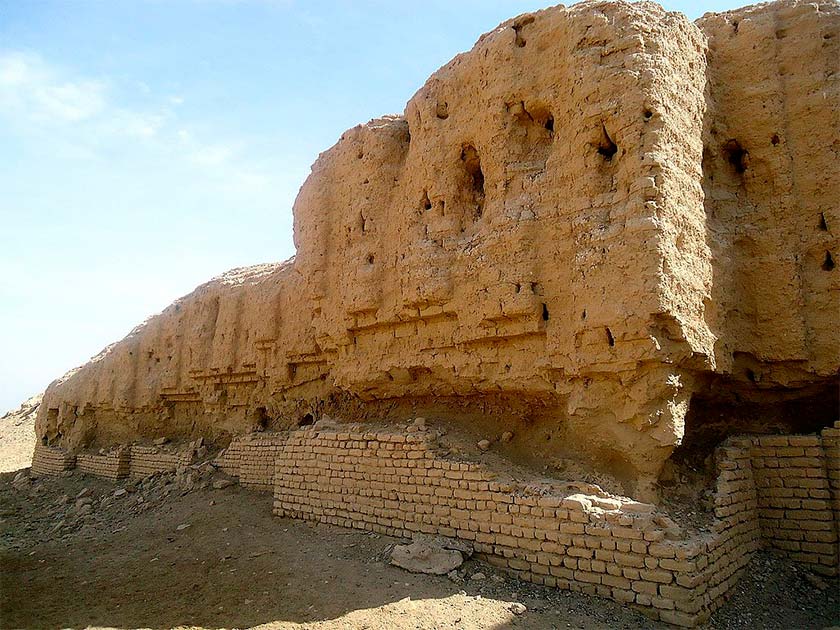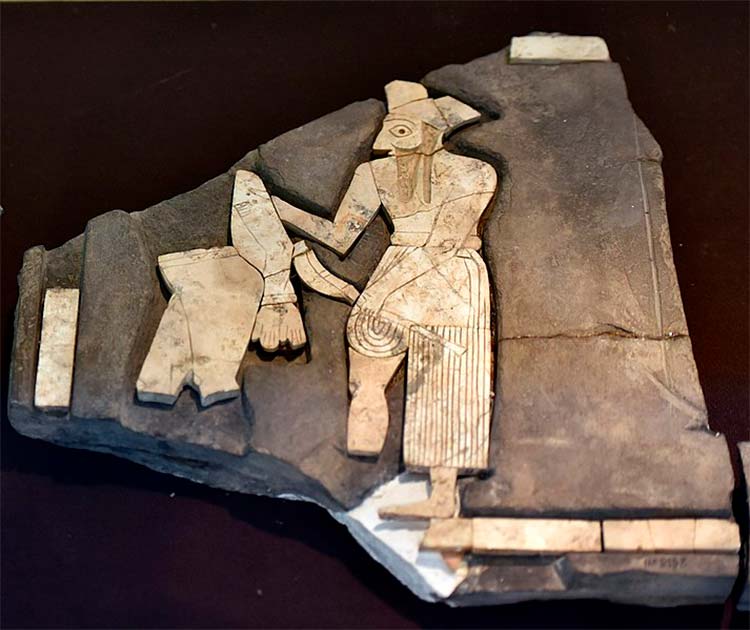Sumer was one of the first great civilizations in human history. Located in Mesopotamia, Sumer and the Sumerian people created a thriving and influential civilization in the floodplains of the Tigris and Euphrates Rivers in what is present-day Syria and Iraq.
The Sumerians created advanced technology such as canals, plows, and irrigation systems that allowed the people of Sumer to become skilled agriculturalists. The first metropolis built by the Sumerians was Eridu, but as the civilization grew more extensive and plentiful, other cities, such as Ur and Uruk, were established. One of these Sumerian cities was Kish, located in Iraq.
In modern-day Tall al-Uhaimer, Iraq, sit the remains of an ancient Mesopotamian city-state known as Kish. Kish is located 80km (50mi) south of Baghdad and 12km (7mi) east of the ancient city of Babylon. Kish is believed to have been occupied as early as the Ubaid period (c.5300 – 4300 BC) through the 7th century AD.
According to The Sumerian King List, an ancient list of Sumerian cities, the kings who ruled the cities, and the length of their reigns, Kish was the first city to have a king following the deluge. This sets it apart, and it does not seem to be the only unusual thing about this city.
Was Kish its own civilization, in the heart of Sumerian Mesopotamia?
The Deluge
The deluge or deluge myth, also known as a flood myth, is a story in which a “great flood, usually sent by a deity or deities, destroys civilization, often in an act of divine retribution.” The flood myth motif can be found in many different cultures, like the Manvantara-sandhya in Hinduism, the Genesis flood narrative, and ancient Mesopotamia.

There are three major stories of a deluge from Mesopotamia. The first is called Atrahasis (sometimes titled “Atrahasis and the Flood” when translated), the Eridu Genesis, and the well-known Epic of Gilgamesh. The deluge is significant because the ancient Mesopotamians saw Kish as “the first city to which ‘kingship descended from heaven’ after the great flood that destroyed the world.”
The archaeological site of Kish is an oval spanning 5 by 2mi (8 by 3km) with the dry former river bed of the Euphrates River running through it. Kish contains around 40 earthen mounds and covers several excavated sections known as Tell Ingharra, Area P, Mound A, and Tell H.
These were discovered by a team of archeologists from the Field Museum of Natural History in Chicago, Illinois, and the University of Oxford in England. The team of archeologists worked at Kish from 1923 through 1933 and were able to uncover evidence that Kish was urbanized relatively early compared to other Sumerian cities and that Kish was amongst one of the region’s locations of economic, military, and political epicenters while in its supremacy.
The joint excavation at Kish from 1923 to 1933 uncovered the four additional sections of the site, which provides us with a better look into what life was like in Kish. The first section is Tell Ingharra.
In this area, archeologists uncovered twin ziggurats. A ziggurat is a massive structure built by the ancient Mesopotamians. The ziggurat is usually described as a “terraced compound of successively receding stories or levels. ” The Sumerians believed that the gods lived in the temple on top of the ziggurats and only priests or “highly respected individuals” could enter the structure.
One of the most well-known ziggurats is the Great Ziggurat of Ur near Nasiriyah, Iraq. The twin ziggurats at Tell Ingharra were not alone. A Neo-Babylonian Temple Complex was uncovered as well. The temple complex was believed to be an active religious center until a few years after 482 BC, and the builder’s name was found on some of the bricks. The builder was Nebuchadnezzar II.
Area P is located in the Northern part of Kish, and a “Plano-convex building” (PCB) was discovered there. There are multiple rooms in the PCB where ash, arrowheads, and copper blades were found, which suggests that the building was destroyed or experienced major damage during its prime.
The PCB is significant because it provides historians with a look at the socio-economic dynamics in Kish. The PCB has been recognized as a “public building associated with the economical production of beer, textile, and oil.”
It is also believed that the structure may also have been the location of the city’s administrative center. There are four main sections to the PCB, a production area, an administrative area, a domestic and private housing area, and an area of unknown purpose, but it is divided into several smaller rooms.
- Hattusa: The Great Hittite City At The Edge Of The World
- The Code of Ur-Nammu: the Oldest Law in the World?
Mound A includes a palace and a cemetery. The cemetery portion of Mound A, at the time of excavation during 1922-1925, produced seals and artifacts that were found amongst the graves that were older than the palace in the same location.
This difference in the age of materials at the occupation layer indicated that the cemetery was used for burials as far back as the pre-Sargonic times, around the 24th – 23rd centuries BC. The palace was in a state of significant decay when it was unearthed below Mound A.
The palace has three sections: the original building, an eastern wing/staircase, and an annex. The original building’s walls were very thick as opposed to the noticeably thinner walls of the annex. One of the most significant items found here was a piece of pottery made of slate with limestone inlay, depicting a king punishing a prisoner.

Tell H is also called “The Sasanian Settlement” due to the discovery of Sasanian coins, pottery, and incantation bowls. The Sasanian Empire, also known as the Empire of Iranians, was the last Iranian empire before the early Muslim conquests of the 7th and 8th centuries AD. Stucco decorations were uncovered in the first two buildings and researchers were able to use the decorations to identify the person who lived there, the Sasanian king Bahram V (420-238 AD).
Was Kish part of Sumer?
Because of the different occupation layers, years in which Kish was inhabited, and its role in Mesopotamia, there has been some debate as to whether Kish was part of the Sumerian civilization or if it was its own independent culture. Polish-American ancient historian Ignace Gleb formerly identified Kish as “the center of the earliest East Semitic culture,” which he called the “Kish civilization”.
This idea of a separate civilization outside of Sumer was accepted for many years until new studies and a publication in 2021 have all but discarded Gleb’s ideas. Kish is now recognized as one of the 12 city-states of Sumer and an area of prominence in Mesopotamia during the Early Dynastic Periods (2900-2300 BC).
Top Image: Some believe that the ancient Sumerian city of Kish was its own distinct civilization. Source: Top Images / Adobe Stock.